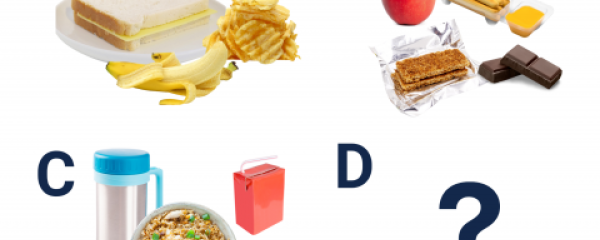What is it all about?
Students examine food advertisements in popular media aimed at children to understand how advertisements (ads) and food marketing techniques in various media forms may affect their food choices. Students identify strategies for evaluating these influences to promote healthier eating habits in a variety of situations and settings.
Curriculum Connections
Grade 4
Health & Physical Education: A1.1, A1.3, A1.5, A1.6, D1.1, D2.1, D3.1
Language - Media Literacy: 1.1, 1.2, 1.3, 1.4, 1.6, 2.1, 2.2, 3.1, 3.2, 3.3, 3.4
Grade 5
Health & Physical Education: A1.1, A1.3, A1.5, A1.6, D2.2, D3.1
Language - Media Literacy: 1.1, 1.2, 1.3, 1.4, 1.6, 2.1, 2.2, 3.1, 3.2, 3.3, 3.4
Grade 6
Health & Physical Education: A1.1, A1.3, A1.5, A1.6, D2.1
Language - Media Literacy: 1.1, 1.2, 1.3, 1.4, 1.6, 2.1, 2.2, 3.1, 3.2, 3.3, 3.4
What is needed?
A variety of food/beverage advertisements from social media platforms
How is it done?
- Explain to students that advertising and food marketing is all around us and is part of many types of media, such as television, newspapers, radio, social media, and video games. In order to influence food choices, marketers include celebrity endorsements, contests, and branding to food and beverage packaging. These techniques make products easy to recognize, promote sales, and entice people to buy their product over other brands. This type of advertising can be difficult to recognize. It is important to be aware of these ads and food marketing techniques when using social media and engaging with others online, to understand how they can influence our eating choices.
- Have students work as a class to generate a list of the types of media they consume and where they see and hear food ads and marketing techniques. Have students identify the food products that they see most frequently advertised that are aimed at their age group.
- Provide students with an example of a food ad that they might commonly see on social media or guide them in selecting a food ad they see frequently.
- Have students work in pairs or small groups to identify food marketing techniques designed to persuade them to choose a product. Examples are celebrity endorsements, offers of free food or prizes, tickets to movies or sports events, points earned or coupons for future purchases, and claims about health and wellness. Have students describe the implied and overt messages that are being communicated about the product.
- Using a Think, Pair, Share strategy, have students think about a time when they or others weren’t interested in a food or beverage but were influenced to purchase it by the media messages about that product.
- Facilitate a large-group discussion in which students explain how they might recognize when foods are being marketed to them through different social media platforms, and how they decide whether a food is a healthier choice. Examples include being more aware of the marketing techniques used and the implied messages, using food ingredients and nutrition labels rather than relying on marketing messages, looking for other information to see if claims are true, and asking the food manufacturer for more information about product ingredients and nutrients.
- Provide students with scenarios that let them practice strategies for recognizing and evaluating food marketing techniques and using nutrient fact tables and ingredient lists to make healthier eating choices in a variety of situations such as at the movies, while playing video games, or when streaming videos.
Sample scenario:
You have been asked to endorse and promote a food or beverage online in one of the following media forms: commercial, social media platform, or magazine ad. This product claims to be “healthy” for your body. Create a list of questions you’d like to ask the company before you agree or disagree to endorse their product. Example questions:
- “Who is the target audience for your product?”
- “What message do you want to communicate about the food or beverage?”
- “How does your product contribute to a healthy active lifestyle?”
Opportunities for Assessment
- Use the pairs/small-group work to assess students’ understanding of food marketing techniques used to influence their food and beverage choices.
- Use the large-group discussion and scenarios to assess students’ understanding of how to recognize food marketing techniques in media advertisements and determine the validity of food claims.
- Use the scenarios to assess students’ understanding of conventions and techniques used in media advertising and the use of media to promote healthier eating habits in a variety of situations and settings.
Ideas for Extension
Have students create media messages aimed at their age group to increase awareness of food marketing techniques for promoting healthier eating habits in a variety of situations, keeping in mind personal guidelines for healthier eating.
Educator Notes
- Students bring their learning home to their families, and they have variable amounts of control over the food they eat at home and the food they bring to school. Consult Creating a Safe and Inclusive Learning Environment for tips for talking about healthy food choices.
- Consult Additional Resources for more information about marketing techniques and their influences on people’s food choices.
- Consider accessing Canada’s Food Guide for more information about the benefits of being aware of food marketing and how to be aware of food marketing when making food choices.



